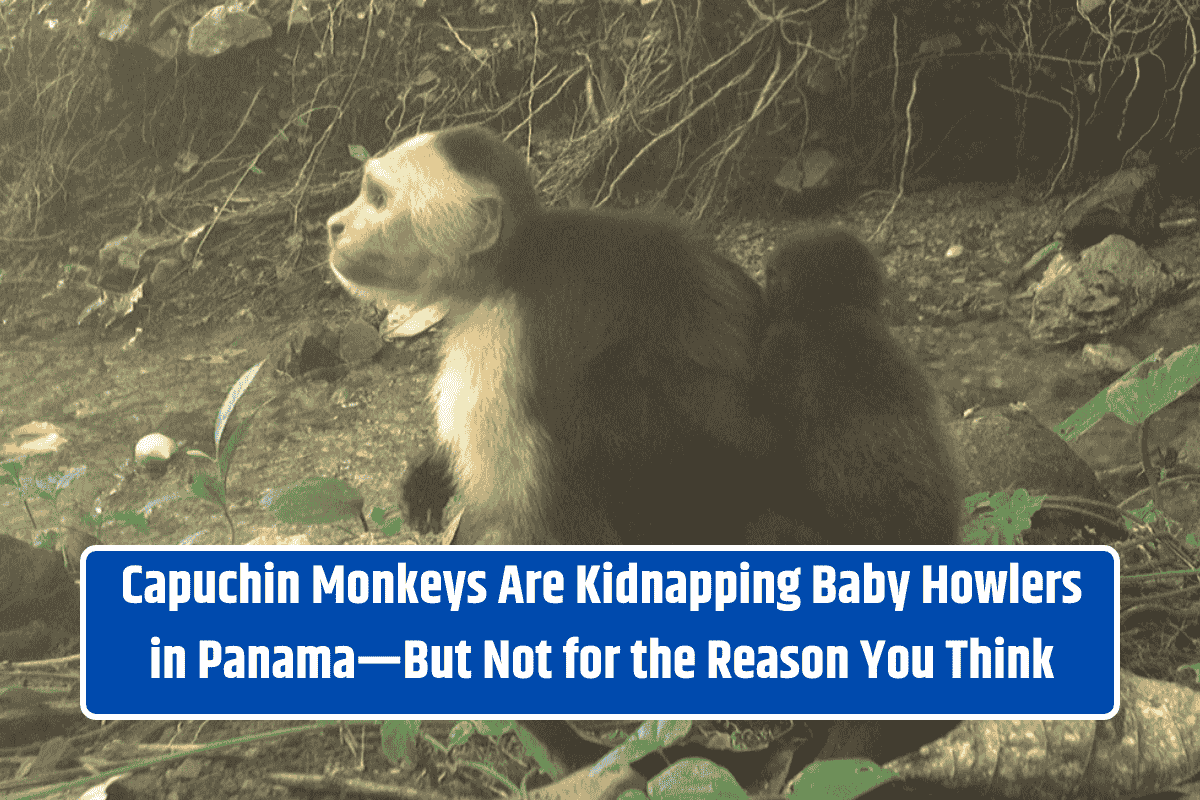On a remote island off the coast of Panama, scientists recently observed a strange and disturbing behavior among capuchin monkeys. A young male capuchin, nicknamed Joker, was seen carrying something on his back. At first, researchers thought it was a baby capuchin. But a closer look revealed it was actually a baby howler monkey, a completely different species.
This unexpected behavior, caught on camera by behavioral ecologist Zoë Goldsborough and her team, has left scientists puzzled—and raised deeper questions about primate behavior, innovation, and even boredom.
Where It Happened: The Remote Island of Jicarón
The footage came from Jicarón Island, part of Coiba National Park in Panama. The island is wild, without electricity or human residents, and has limited accessibility due to rough terrain and ocean tides. To study monkeys there, researchers rely on motion-sensor camera traps set on the ground.
These traps can’t record what’s happening in the treetops, where howler monkeys usually live. So, the exact moment and method of the abductions remain unknown.
What the Researchers Found
Over a period of 15 months, the team documented at least 11 incidents where juvenile or subadult male capuchins abducted baby howler monkeys. The footage showed the monkeys carrying the infants but not caring for them—there was no feeding, no protection, and no play. The babies later died from starvation, as they had no access to their mothers’ milk.
This wasn’t a case of adoption, which is known to happen among some monkeys, particularly females. Nor was it about aggression or predation. The capuchins didn’t eat or harm the infants violently. So why were they doing it?
A Possible Explanation: Culture, Not Hunger
The researchers, from institutes like Max Planck, University of Konstanz, and the Smithsonian, suggest the behavior may be a “cultural fad”—something similar to trends among humans that serve no real purpose but spread within a group.
Interestingly, it was only young male monkeys showing this behavior, and the “trend” seemed to start with Joker. Other monkeys may have copied him out of curiosity or to socially bond with him.
Could Boredom Be the Cause?
With no natural predators and fewer challenges, the island environment may be making the monkeys bored, said Brendan Barrett, one of the study’s co-authors. This extra free time and freedom may lead them to try new, even pointless behaviors.
Young animals are often the ones who start new cultural practices, like using tools or playing with objects. This aligns with similar findings in other monkey species, like Japanese macaques, where a young female started washing sweet potatoes—a behavior later copied by others.
Is This Dangerous for Howler Monkeys?
Yes. The mantled howler monkeys on Jicarón belong to an endangered subspecies. Since females give birth only once every two years, losing infants could severely impact their population.
Researchers hope the capuchins will drop this behavior over time, like passing human fads. Or maybe the howler mothers will adapt and become more protective.
What This Says About Us
Barrett reflected on how this behavior reminded him of childhood—catching frogs and insects without meaning harm. “It’s a mirror,” he said. Like humans, these monkeys might just be doing things out of curiosity, with no purpose, but the harm to others is real.
The case of the baby howler kidnappings is more than a wildlife mystery—it’s a reminder that boredom, intelligence, and culture aren’t limited to humans. On this remote island, young capuchins are exploring new behaviors, possibly without understanding the consequences. As researchers continue studying them, they hope the fad will pass before more harm is done. The story is a powerful reflection of how even animals, like us, can sometimes act with no clear purpose—just curiosity.











